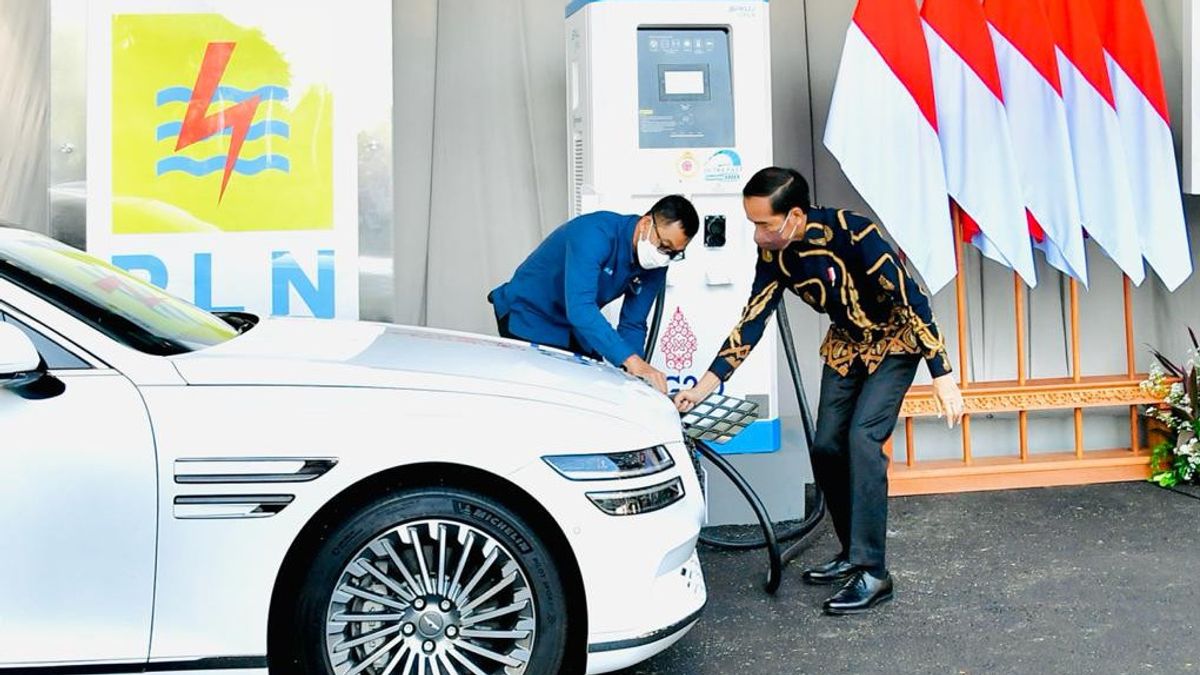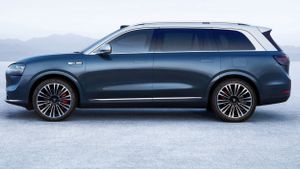The government is in the middle of finalizing the incentive rules for purchasing electric vehicles. The amount of incentives given, said Industry Minister Agus Gumiwang Kartasasmita, varies according to the type of vehicle.
For example, for the purchase of electric cars, the amount of incentives is up to Rp. 80 million and for hybrid-based electric cars it is around Rp. 40 million. As for the type of two-wheeled vehicle, the purchase of electric motorcycles is an incentive of around Rp. 8 million. Meanwhile, the conversion motor into an electric motor gets an incentive of around Rp. 5 million.
Providing incentives is an effort to stimulate the electric vehicle industry in Indonesia, as well as encourage increased use of electric vehicles as more environmentally friendly vehicles.
The government is now calculating these incentives. This incentive is very important and prepared after studying various rules from countries that are relatively more advanced in the use of EVs (electric vehicles)," Agus said in his official statement, on December 15.
So far, the use of electric vehicles in Indonesia is still relatively low. Only about 25,316 units until September 2022, with details of 21,668 units of electric motors and 3,317 units of electric cars. Excluding hybrid and others.
This means that only 16 percent of the total vehicle population in Indonesia reached 150 million units according to data from the Korlantas Polri on October 4, 2022.
In fact, the use of electric vehicles can be of great benefit to the environment and society. The first benefit is that Indonesia can become a producer of electric vehicle batteries.
"We have the largest nickel reserves in the world. Nickel is one of the raw materials for batteries," said Agus.
Second, the increase in electric vehicles can help the country fiscally because it will reduce fossil fuel subsidies. Third, these incentives will force electric car/motor manufacturers to accelerate investment realization in Indonesia.
"Fourth, as part of the global community, Indonesia can prove its commitment to reducing carbon emissions," he added.
President Joko Widodo (Jokowi) also believes that the development of the electric vehicle industry can create jobs, and boost revenue from taxes or non-taxes.
"If it develops, taxes will definitely increase, PNBP will definitely increase and most importantly will open up the widest possible employment opportunities because this will encourage other supporting industries," Jokowi said in a press statement at the Merdeka Palace on December 21.
Moreover, added the President, not only Indonesia, but other countries, especially European countries, have popularized electric vehicles in a similar way, namely through incentives.
"We have to see that now almost all countries have done it," added Jokowi.
European Union countries even set a target of reducing carbon dioxide emissions from ordinary cars by 55 percent and van types by 50 percent by 2030. In addition to perfecting the mass transportation system so that people switch from using private vehicles, governments in European Union countries also continue to boost sales of electric vehicles.
They realize that the transportation sector is one of the biggest contributors to greenhouse gas emissions. That's why reducing transport emissions is the key to meeting climate neutrality goals in the European Union.
Launching the European Environment Agency, the electric car market, which includes battery electric vehicles (BEV) and plug-in hybrid electric vehicles (PHEVs) in European Union countries has increased in the past decade, from only 600 units in 2010 to about 1,061,000 units in 2020,
Likewise in 2021, registration for electric cars will soar, accounting for nearly 18 percent of newly registered passenger cars. Nearly 38 thousand BEV-type electric vans have been sold. It increased 1 percent from the previous year. Meanwhile, PHEV's electric car increased 7 percent from the previous year.
The improvements occurred in almost all EU countries, with the highest being Norway, Iceland, Sweden and Denmark.
The leading countries in electric mobility always provide financial incentives, such as tax reductions and exemptions for electric vehicles, so that people will be more interested in turning to the use of electric cars, wrote the European Environment Agency.
For example, Norway implemented a tax exemption for the purchase of 10,700 US dollars worth of BEV-type electric cars by 2021 according to an Electric Vehicle Incentives report. However, currently, the Norwegian Government has planned to partially revoke some of its value-added tax exemption incentives for the delivery of electric cars.
The plan is that VAT exemption incentives will be replaced with subsidies. The revocation of VAT incentives and the provision of subsidies as substitution are planned to take effect on January 1, 2023, only for electric cars with prices above 500,000 Norwegian Krona.
"Support is still given for cheap electric cars. The higher the price of electric cars, the higher the VAT that must be paid," said Norwegian Finance Minister Trygve Slagsvold Vedum in May.
In Indonesia, people's interest in switching to electric vehicles is relatively low. There are still many who are not familiar. They still doubt whether driving electric vehicles is more comfortable than driving conventional vehicles?
There are a number of things that are still stuck, especially about batteries. Launching from various sources, usually, one electric motorcycle battery can currently reach a distance of about 50-120 kilometers. The average highest speed reaches 70 km/hour.
Meanwhile, electric cars can cover a distance of 200-400 km for one battery charge. The speed resembles a conventional car.
Meanwhile, for charging, the time required depends on the battery capacity, on average it takes two to 12 hours. However, battery charging can also use battery exchange mode, no waiting. As for battery life depending on usage, it can take 3-5 years.
In addition to batteries, another obstacle is the availability of electric charging stations. Until now, according to data from the Ministry of Energy and Mineral Resources, there have been 332 charging stations in 279 public locations and 369 battery swap stations spread throughout Indonesia.
The question is whether the units are evenly distributed every 100 kilometers. So, if an electric motorcycle runs out of battery, it can be easier to charge or swap.
If this can be resolved, electric vehicles will certainly be more popular in Indonesia. Moreover, the cost of charging is only around Rp. 1,650 per kWh to Rp. 2,466.7 per kWh.
As for product prices, as more and more automotive factories launch electric vehicles, the price is getting more competitive. For electric cars, the cheapest is from Rp. 238 million (OTR Jakarta) for Wuling type Air EV Standard Range products, up to the most expensive is Rp. 2.5 billion (Off The Road) for Mach-E and Porsche types Taycan S Turbo.
As for electric motors, the price ranges from Rp. 15.7 million to Rp. 38 million.
The English, Chinese, Japanese, Arabic, and French versions are automatically generated by the AI. So there may still be inaccuracies in translating, please always see Indonesian as our main language. (system supported by DigitalSiber.id)








